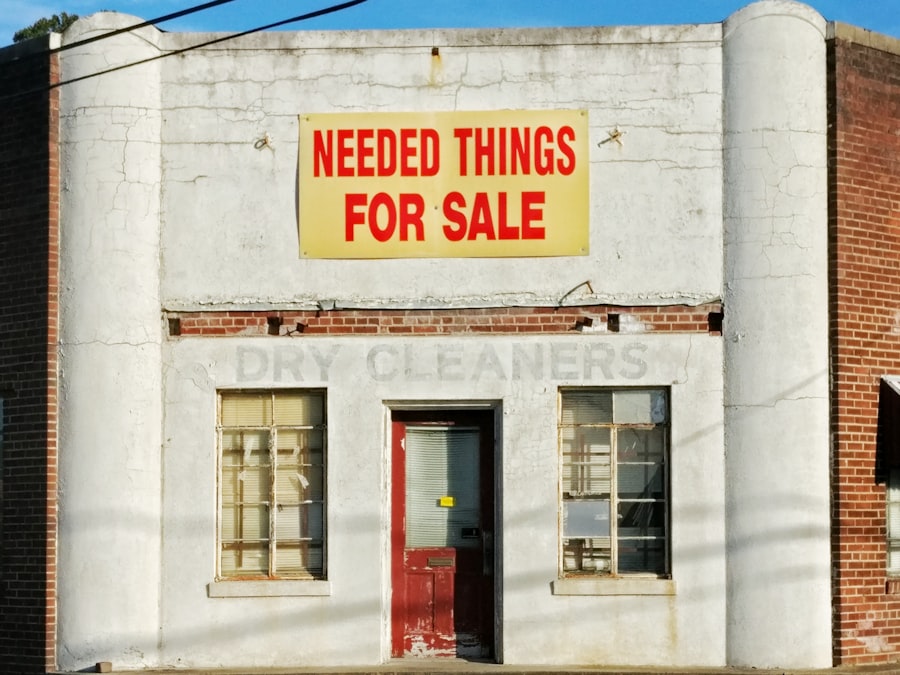The Metropolitan Transportation Authority (MTA) has long been a cornerstone of New York City’s public transit system, providing millions of residents and visitors with essential transportation services. However, the MTA now finds itself grappling with a myriad of financial challenges that threaten its ability to maintain and improve its services. These challenges stem from a combination of factors, including declining ridership, rising operational costs, and the lingering effects of the COVID-19 pandemic.
As the MTA navigates these turbulent waters, it must confront the reality that its financial stability is at risk, necessitating urgent and strategic responses. The financial landscape for the MTA is increasingly precarious. With a budget that relies heavily on fare revenue and government funding, any fluctuations in these areas can have significant repercussions.
The authority’s financial health is further complicated by the need for ongoing infrastructure improvements and maintenance, which require substantial investment. As the MTA seeks to address these pressing issues, it must also consider the long-term implications of its financial decisions on the future of public transportation in New York City.
Key Takeaways
- The MTA is facing significant financial challenges due to a decrease in ridership and revenue.
- Rising costs and maintenance expenses are adding to the financial strain on the MTA.
- The COVID-19 pandemic has had a major impact on MTA finances, leading to government funding and budget cuts.
- Alternative revenue sources are needed to address the funding crisis, potentially leading to fare increases and service reductions.
- Public opinion and community response will play a crucial role in shaping the MTA’s future financial decisions.
Decrease in Ridership and Revenue
One of the most pressing issues facing the MTA is the notable decrease in ridership, which has directly impacted its revenue streams.
This decline has not only reduced fare income but has also diminished ancillary revenue sources, such as retail and advertising within transit stations.
As a result, the MTA has found itself in a precarious financial position, struggling to cover operational costs while facing an uncertain future. The decrease in ridership is not merely a temporary setback; it reflects broader changes in commuting patterns and urban mobility preferences. Many individuals have embraced flexible work arrangements, leading to a sustained decline in daily commuters.
This shift poses a challenge for the MTA as it attempts to adapt its services to meet evolving demands while simultaneously addressing its financial shortfalls. The authority must find innovative ways to attract riders back to public transit while ensuring that its services remain reliable and efficient.
Rising Costs and Maintenance Expenses

In addition to declining ridership, the MTA is contending with rising costs and maintenance expenses that further strain its budget. The authority faces increasing operational costs due to inflation, labor agreements, and the need for technological upgrades.
As maintenance needs grow, so too does the financial burden on the MTA, creating a cycle of escalating costs that is difficult to break. The challenge of maintaining an extensive transit network is not unique to New York City; however, the scale and complexity of the MTA’s operations make it particularly vulnerable to financial pressures. With thousands of miles of track, numerous stations, and a fleet of vehicles that require regular maintenance, the authority must prioritize its spending while addressing immediate needs.
This balancing act is further complicated by public expectations for reliable service and safety, making it imperative for the MTA to find sustainable solutions to its financial challenges.
Impact of the COVID-19 Pandemic on MTA Finances
| Metrics | Data |
|---|---|
| Decrease in ridership | Over 90% decrease in subway and bus ridership |
| Loss in revenue | Projected 8 billion loss in fare and toll revenue |
| Increased operating expenses | Additional 300 million in COVID-19 related operating expenses |
| Government aid | Received 4 billion in federal aid to offset losses |
The COVID-19 pandemic has had a profound impact on the MTA’s finances, exacerbating existing challenges and introducing new uncertainties. Initially, the pandemic led to an unprecedented drop in ridership as lockdowns and health concerns prompted many individuals to avoid public transportation altogether. This sudden decline in fare revenue created a financial crisis for the MTA, forcing it to implement emergency measures to cut costs and preserve essential services.
As the pandemic continues to evolve, the MTA faces ongoing uncertainty regarding ridership recovery. While some commuters have returned to public transit as restrictions have eased, many remain hesitant due to lingering health concerns or changes in work habits. This uncertainty complicates budget planning for the MTA, as it must navigate fluctuating ridership levels while ensuring that it can meet operational demands.
The long-term financial implications of the pandemic will likely shape the MTA’s strategies for years to come.
Government Funding and Budget Cuts
Government funding plays a critical role in supporting the MTA’s operations; however, recent budget cuts have further strained its financial resources. State and federal funding sources have faced their own challenges in recent years, leading to reduced allocations for public transit agencies like the MTAs lawmakers grapple with competing priorities, funding for essential services such as public transportation often takes a backseat, leaving the MTA with limited options for addressing its financial woes. The reliance on government funding underscores the importance of advocacy and collaboration between the MTA and policymakers.
As budget cuts threaten essential services, it becomes increasingly vital for transit advocates to make a compelling case for sustained investment in public transportation. The MTA must work diligently to communicate its value to both riders and decision-makers, emphasizing how robust public transit systems contribute to economic growth, environmental sustainability, and social equity.
The Need for Alternative Revenue Sources

Given the financial challenges posed by declining ridership and government funding cuts, there is an urgent need for the MTA to explore alternative revenue sources. Diversifying its income streams could provide much-needed financial stability while reducing reliance on fare revenue alone. Potential avenues for generating additional revenue include expanding partnerships with private companies, enhancing advertising opportunities within transit facilities, and exploring innovative fare structures that incentivize ridership.
Moreover, leveraging technology could open new doors for revenue generation. For instance, implementing mobile payment systems or subscription-based services could attract new riders while providing a more seamless experience. Additionally, exploring opportunities for real estate development around transit hubs could create long-term revenue streams that benefit both the MTA and local communities.
By thinking creatively about revenue generation, the MTA can build a more resilient financial foundation for the future.
Potential Fare Increases and Service Reductions
As financial pressures mount, discussions surrounding potential fare increases and service reductions have become increasingly prominent. While raising fares may seem like a straightforward solution to address budget shortfalls, it carries significant implications for ridership levels and equity within the transit system. Higher fares could deter low-income riders who rely on public transportation for their daily commutes, exacerbating existing disparities in access to mobility.
Service reductions pose similar challenges; while they may provide short-term cost savings, they can lead to longer-term consequences such as decreased ridership and diminished public trust in the transit system. The MTA must carefully weigh these options against their potential impact on communities and overall service quality. Engaging with riders and stakeholders during this process is crucial to ensure that any decisions made are informed by public input and reflect the needs of those who rely on public transportation.
Public Opinion and Community Response
Public opinion plays a significant role in shaping the future of the MTA as it navigates its financial challenges. Riders’ perceptions of service quality, safety, and affordability directly influence their willingness to use public transportation. As such, understanding community sentiment is essential for the MTA as it seeks to rebuild trust and attract riders back to its services.
Community response has been mixed; while many individuals recognize the importance of robust public transit systems, concerns about fare increases or service reductions can lead to backlash against proposed changes. The MTA must prioritize transparent communication with riders and actively seek feedback on potential solutions. By fostering an open dialogue with communities, the authority can better align its strategies with public expectations while demonstrating its commitment to serving all New Yorkers.
The Role of MTA Leadership in Addressing the Funding Crisis
Effective leadership within the MTA is crucial as it confronts its funding crisis head-on. The authority’s leadership team must navigate complex financial landscapes while advocating for sustainable solutions that prioritize both service quality and fiscal responsibility. Strong leadership involves not only making tough decisions but also fostering collaboration among stakeholders at all levels.
MTA leadership must also be proactive in engaging with government officials and community members to advocate for necessary funding support. By building coalitions with other transit agencies and organizations advocating for public transportation investment, MTA leaders can amplify their voices in discussions about funding priorities. Ultimately, effective leadership will be key in steering the organization through these challenging times while laying a foundation for future success.
Long-term Solutions for Sustainable Funding
To ensure long-term sustainability, the MTA must develop comprehensive strategies that address its funding challenges holistically. This includes not only diversifying revenue sources but also investing in infrastructure improvements that enhance service reliability and attract riders back to public transit. Long-term planning should involve collaboration with urban planners and community stakeholders to create integrated transportation solutions that meet evolving mobility needs.
Additionally, exploring innovative financing mechanisms such as public-private partnerships could provide new avenues for investment in transit infrastructure. By leveraging private sector expertise and resources, the MTA can enhance its capacity to deliver high-quality services while minimizing financial risks. Long-term solutions will require foresight and adaptability as the transit landscape continues to evolve in response to changing societal needs.
Collaborative Efforts with Local and State Governments
Collaboration between the MTA and local or state governments will be essential in addressing its financial challenges effectively. By working together on shared goals related to transportation infrastructure and economic development, both entities can create synergies that benefit their respective constituents. Joint initiatives could include coordinated planning efforts that align transit investments with broader urban development strategies.
Moreover, fostering partnerships with local governments can enhance community engagement efforts around public transportation initiatives. By involving local leaders in discussions about funding priorities or service improvements, the MTA can build stronger relationships with communities while ensuring that their voices are heard in decision-making processes. Collaborative efforts will be key in creating a more resilient transit system that meets the needs of all New Yorkers while securing sustainable funding for years to come.
The Metropolitan Transportation Authority (MTA) has been grappling with significant funding challenges, which have been exacerbated by declining ridership and increased operational costs. A related article that delves into the intricacies of these financial issues can be found on MyGeoQuest. This article provides an in-depth analysis of the MTA’s current fiscal situation and explores potential solutions to ensure the sustainability of New York City’s vital transit system. For more detailed insights, you can read the full article by visiting this link.
WATCH THIS! The Real Cost of NYC Living: Your Wallet, Sanity, and Subway Survival Skills
FAQs
What is the MTA?
The MTA, or Metropolitan Transportation Authority, is a public benefit corporation responsible for public transportation in the New York metropolitan area.
What are the funding problems facing the MTA?
The MTA is facing funding problems due to a combination of declining ridership, increased operating costs, and a lack of dedicated funding sources.
How does the MTA currently receive funding?
The MTA receives funding from a combination of fares, tolls, dedicated taxes, and state and local subsidies.
What are the potential consequences of the MTA funding problems?
The potential consequences of the MTA funding problems include service cuts, fare increases, and a deterioration of the transportation infrastructure.
What are some proposed solutions to the MTA funding problems?
Some proposed solutions to the MTA funding problems include congestion pricing, increased state and local subsidies, and dedicated funding sources such as a tax on luxury real estate transactions.
